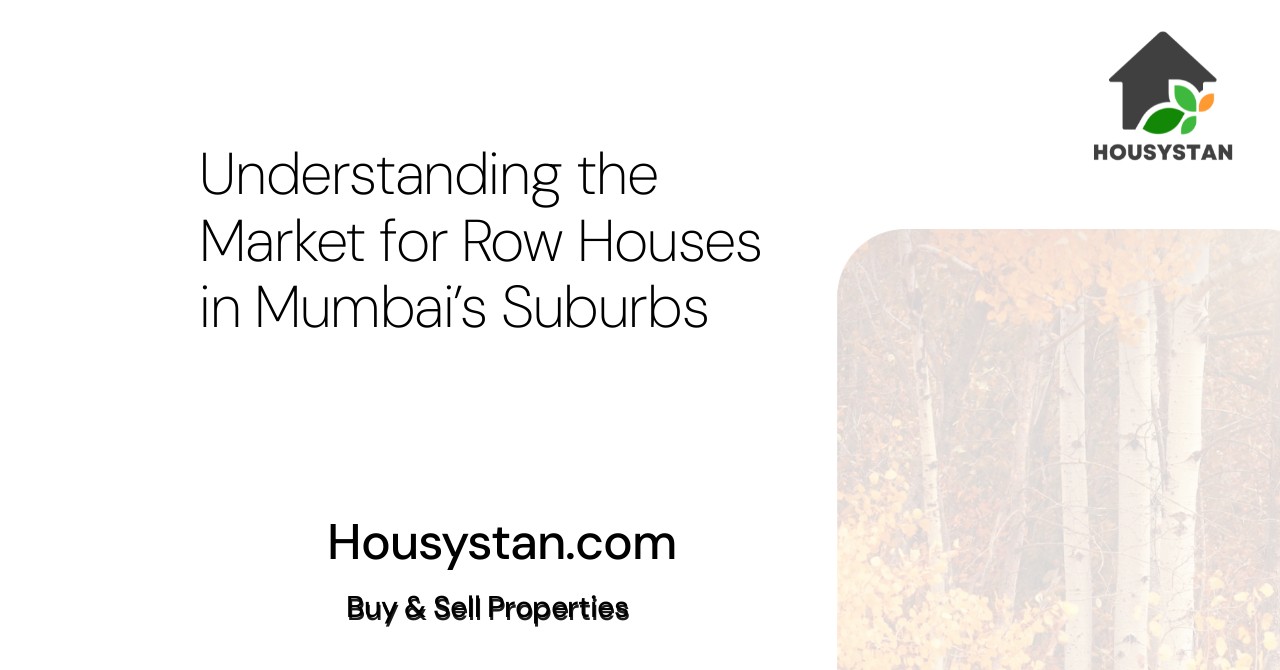Understanding the Market for Row Houses in Mumbai’s Suburbs
Read latest blogs and articles from Housystan

The Information mentioned here was last updated on:
31/12/2025Understanding the Market for Row Houses in Mumbai’s Suburbs
Mumbai’s suburbs have rapidly evolved into a prime destination for homebuyers seeking row houses that blend comfort, privacy, and modern infrastructure. With the city expanding beyond its traditional boundaries, suburban neighborhoods such as Thane, Mulund, Borivali, and Panvel are witnessing a rise in demand for row houses, making them highly sought-after real estate investments. This surge is driven by the growing desire for spacious living, community-based environments, and better connectivity to Mumbai’s commercial hubs.
Homebuyers in Mumbai’s suburban regions are increasingly drawn to the unique advantages offered by row houses. Unlike traditional apartments, row houses provide ample private outdoor space, dedicated parking, and greater independence, all within a secure gated community. Families appreciate the balance of privacy and neighborly interaction, along with access to shared amenities such as landscaped gardens, playgrounds, and clubhouses. These features make row houses especially attractive to buyers looking for a premium lifestyle without the congestion of high-rise towers.
- Verified Tenants/Buyers
- Unlimited Property Listing
- Zero subscription/charges fee
The real estate market in Mumbai’s suburbs also benefits from robust infrastructure development. Improved road networks, upcoming metro lines, and proximity to business districts have enhanced the appeal of locations like Kalyan, Dombivli, and Vasai. Developers are responding to this demand with innovative row house projects that emphasize sustainable living, modern architecture, and eco-friendly facilities. As a result, these neighborhoods are experiencing steady price appreciation, making row houses a lucrative option for both end-users and investors.
For those considering a move or investment, it is essential to understand the local dynamics. Factors such as school proximity, healthcare facilities, retail options, and public transport play a significant role in shaping property values. Mumbai’s suburban row house communities offer a blend of urban convenience and suburban tranquility, meeting the needs of families, working professionals, and retirees alike.
In summary, the market for row houses in Mumbai’s suburbs is poised for continued growth. With evolving buyer preferences, enhanced infrastructure, and rising lifestyle expectations, these properties remain a top choice for individuals seeking quality living and long-term value in one of India’s most vibrant cities.